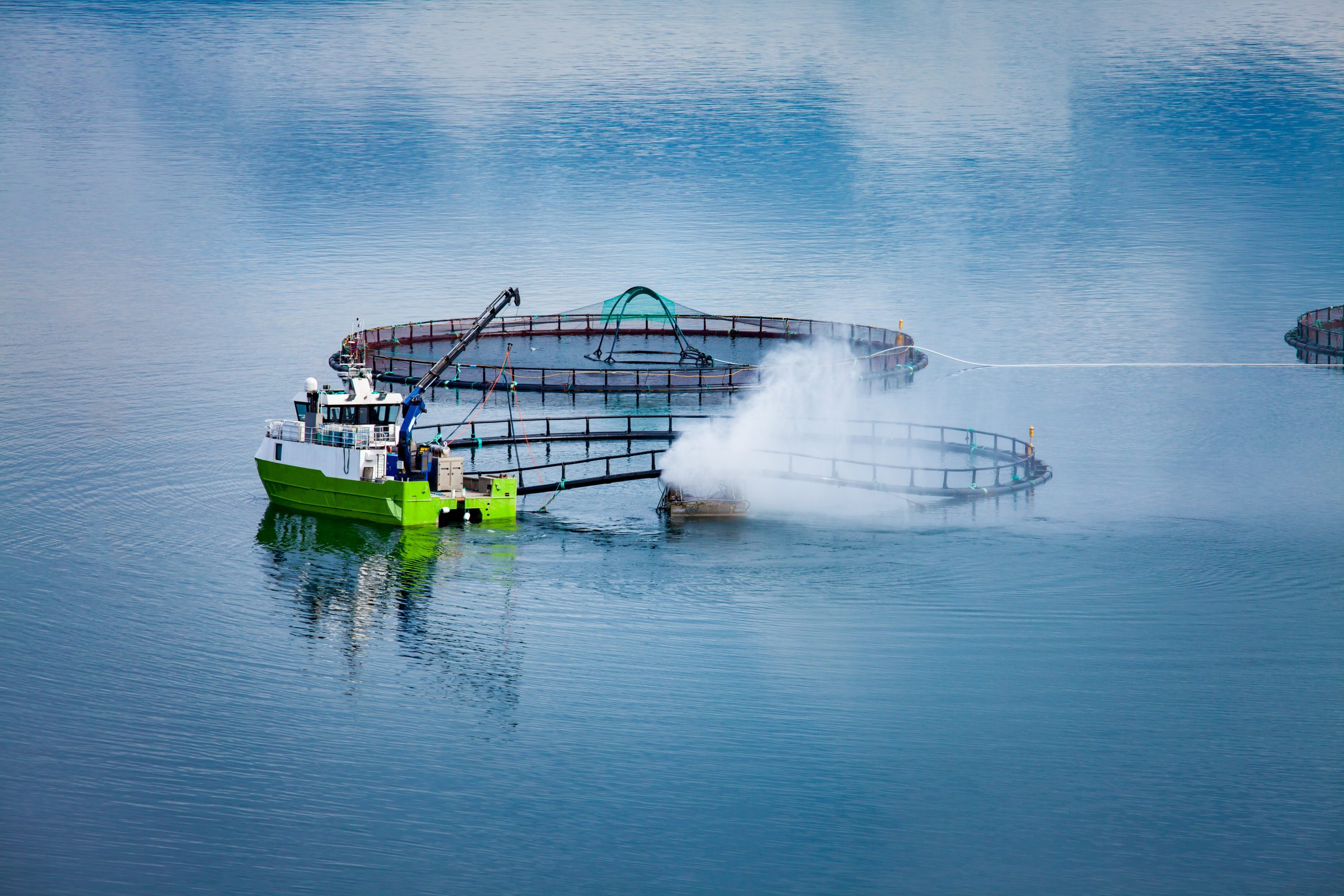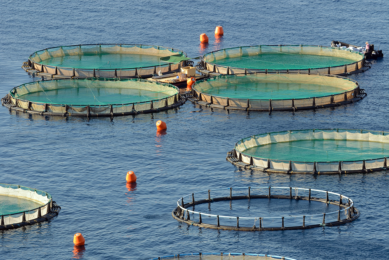Aquaculture: New diets, new testing

The aquaculture sector is growing. But to do this sustainably, the feed ingredients have to change, and with that, the analytical methods. How to deal with new protein sources for farmed fish is therefore one of the key research topics worldwide.
Fish nutrition and aquaculture was one of the key topics at the recently held International Feed Conference (Feed 2018): Present and Future Challenges, which took place in Bergen, Norway. A number of key experts in the field of animal nutrition, ingredient testing and aquaculture came together at the end of October to discuss the latest issues that today’s animal feed sector and fish farming is facing. Here we explain some of the highlights of the event.
Room to grow
The aquaculture sector is a fast growing food-producing sector, but still relatively untapped, considering that the world is covered for 70% by oceans. Around 45% of the seafood consumed is farmed, the rest comes from wild catch. Although the percentage of farmed fish will probably soon be higher than the wild catch percentage, it still has a lot of room for growth. At the same time, with the world population increasing in the coming decades and the associated increased demand for animal protein, the need for protein sources such as fish (that can be eaten by all cultures and is often considered a healthy animal protein) is huge. Knowing that only 6.5% of all the total protein consumed on a global level comes from fish and other aquaculture species, it is obvious that aquaculture is one part of the solution to feed the hungry mouths of the growing world population.
Aquaculture is constantly changing
In species that have farmed for a long time already, such as salmon, we have seen a great improvement of diet formulation and the feed conversion ratios (FCR) over the years. Feed represents a considerable part in the total costs for a fish farm, so optimising the amount of feed needed is key. In Atlantic salmon for example, the FCR has improved from over 3 in 1975, to 1.5 in 1990 to around 1.3 today. This has been the result of selective breeding, nutrient requirement studies and improved feed technology. This makes the Atlantic salmon a champion in turning feed into animal protein. Feed conversion ratios of other farmed aquaculture species are somewhat higher (worse): Seabass (2.0), common carp (1.5-3.5), pangasius (1.7-3.0) and Vannamei shrimp (1.4-1.8). But not only the FCR has changed, also the way a fish diet is built up has changed considerably. Vegetable ingredients (for example soy and wheat gluten) are replacing marine ingredients (fish meal and fish oil). In 1990, a typical salmon diet did not have any plant based materials in it. Since 2000, that started to change, when plant oil (often rapeseed oil) were added, and partly replaced the fish oil inclusion. A typical salmon diet of today has more plant based oil and plant based protein included than marine ingredients. Experts even say that 100% replacement of marine ingredients by plant based ingredients is possible from a nutritional standpoint.

Questions raised with new proteins
But it is not only plant based materials that are in the spotlight as replacement candidates for marine ingredients. New protein sources include other marine ingredients such as fish by-products, low trophic species, krill or coperpods. But also poultry by-products, insects, algae and single cell protein sources (from bacteria or fungi) are promising. A lot of attention goes to insect meal and insect oil specifically. Since the EU allowed the use of insect protein in fish diets in 2017, the studies and production of this animal protein has really taken off. The incentive to replace the marine ingredients with others stems from protecting the oceans from overfishing (wild catch that is used for fish meal and fish oil). But the use of alternative proteins also raises other questions. For example, we need to critically look whether the new protein sources on the market are actually better when we look at circularity and sustainability. When we feed soy based diets to farmed fish in Norway, where the soy has to be imported from South America, we can ask ourselves whether it is really more sustainable. To call it a suitable alternative for fish meal, we could say that all of the alternatives have to have a low CO2 footprint, not used in human food production and should be available at large volumes, otherwise the feed industry is not interested in it. The shift to more plant based ingredients also brings other, more nutritional, challenges. Fish meal is known to have a high level of selenium, an essential element in animal nutrition. When fish meal is left out or critically reduced in the feed matrix, supplementation of selenium (organic or inorganic) is needed, but which levels are safe to use? You can’t go too high, as excess selenium is known to be toxic. This is why research groups, such as the Institute of Marine Research (IMR) in Norway is looking at finding optimum inclusion levels for both inorganic and organic selenium in the new – more – plant based diets for salmon.

Find out more about some of the protein alternatives for soy that are currently seen as promising for livestock and fish diets.
Adapting the analytical tools
With a rapid implementation of novel feed ingredients, it also requires new risk assessment, better and new analytical tests and the development of legislation. This is beyond the ‘normal’ analytical test methods for the major nutrients such as protein, fats and vitamins and minerals. Documents and feed labels are not safe against fraud, so you also need analytical approaches to test the authenticity of the feed and the ingredients in it, especially now that new (often unknown) ingredients hit the market and find their way in animal feed. In the case of insect meal for example, the approval of this new ingredient and their processed animal proteins (PAPs), raised the question of quality control, contamination and fraud detection. It is needed to be able to validate where a certain ingredient (in this case PAPs) come from. The Walloon Agricultural Research Centre in Belgium for example has done research to find a method for isolation of PAPs from insects in feed and their identification by microscopy. The same institute has also looked at better detection of bovine blood meal, blood products and milk products in compound feed using the UHPLC-MS/MS method. This is important as animal by-products are an interesting feed ingredient. Due to the BSE crisis they were under discussion, but since the re-introduction of non-ruminant PAPs for aquafeed in 2013, it became important to be able to test for these PAPs (and to detect possible fraud), as ruminant PAPs are still not allowed.
The Feed 2018 conference took place from 24-26 October.











